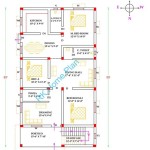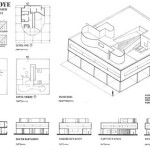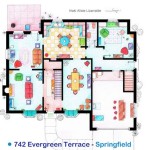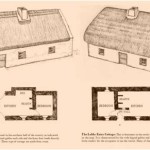Plan, Elevation, And Section of a House: Essential Aspects
Understanding the plan, elevation, and section drawings is crucial for both architects and homeowners alike. These drawings provide a detailed representation of a house's design, layout, and construction. They are essential for visualizing the project before construction begins and for ensuring that the house meets building codes and regulations.
Plan Drawings
Plan drawings provide a bird's-eye view of the house from above, showing the floor plans of each level. They include details such as room layouts, wall thicknesses, door and window openings, and the overall dimensions of the house. Architects use plan drawings to develop the spatial relationships between rooms and to ensure that the house is functional and efficient.
Elevation Drawings
Elevation drawings are vertical projections of the exterior walls of the house, showing the height and width of the building. They depict the facade of the house from different sides, typically the front, back, and sides. Elevation drawings include details such as windows, doors, balconies, rooflines, and any other exterior features. They are essential for understanding the overall appearance and proportions of the house.
Section Drawings
Section drawings are vertical cuts through the house, showing the interior construction from top to bottom. They reveal the relationship between different levels and provide details about the structural elements of the house, such as the foundation, walls, floors, and roof. Section drawings are crucial for understanding the flow of space and the structural integrity of the house.
Essential Aspects to Consider
When reviewing plan, elevation, and section drawings, it is important to pay attention to the following essential aspects:
- Scale: The drawings should be drawn to scale to accurately represent the size and proportions of the house.
- Dimensions: All dimensions should be clearly indicated on the drawings, including room sizes, wall lengths, and ceiling heights.
- Materials: The drawings should specify the materials to be used for different elements of the house, such as the foundation, walls, and roofing.
- Details: The drawings should include detailed information about windows, doors, stairs, and other architectural features.
- Codes and Regulations: The drawings should adhere to all applicable building codes and regulations to ensure that the house is safe and habitable.
Conclusion
Plan, elevation, and section drawings are essential tools for planning and designing a house. By carefully reviewing these drawings, architects and homeowners can ensure that the house meets their functional and aesthetic requirements while adhering to building codes and regulations. Understanding the essential aspects of these drawings is crucial for creating a house that is not only beautiful but also safe and durable.

Scheme Of The Tested Single Family House A Front Elevation B Scientific Diagram

Two Level House Elevation Section Ground And First Floor Plan Details Dwg File One Plans Small Design

Residential Building With Detailed Plan Section Elevation Specifications Plinth Design

Single Y House Plan With Section And Elevation Drawing Dwg File Cadbull

Simple House Elevation Section And Floor Plan Cad Drawing Details Dwg File Cadbull

Lasantha M I Will Draw Architectural Floor Plan Site Elevation Section And Design House For Usd 4 2d Drawings Plans On Hiretalents Com

Construction Plan Drawings Elevation Cross Section And Ground Scientific Diagram

House Plan Elevation And Section View With Door Window Sanitary Detail Dwg File Cadbull

House Plan Elevation Section Building Design Architectural Plans Small Architecture

House Plan With Section And Elevation In Dwg File Cadbull








